The planes that can pick up trains
-
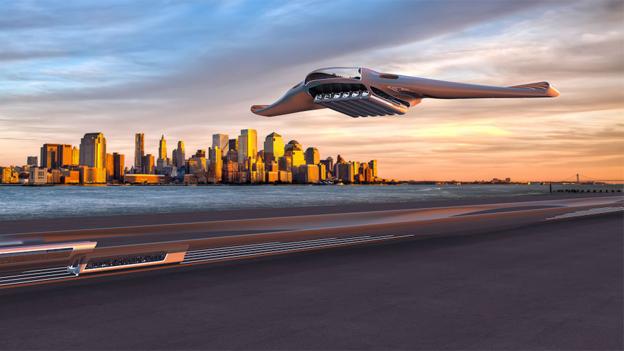
Students have come up with a radical idea for cutting journey times in 2050 – aircraft that collect and drop-off passengers in moving pod-like carriages.
University of Glasgow and Glasgow School of Art students have devised Horizon, in which planes would pick up and carry moving railway carriage-like “pods”.
Transport system, whichever way you look at it, is broken. Sure, most of us eventually get to where we need to go, but congestion and pollution are constant problems in cities across the world. When you consider the amount of time we spend just getting from one place to another, it makes you think there must be a better way.
The greatest minds in the transport industry have spent most of the last century offering us solutions such as bigger planes, faster trains, and more recently, greener automobiles. But if we want to truly revolutionise the transport experience for the better, then perhaps we need to look to individuals from outside the industry.
Later today Elon Musk, the co-founder of PayPal, Tesla Motors and SpaceX, is expected to publically unveil details of Hyperloop, a proposed mode of transport he claims could cover the 340 miles (550km) from San Francisco to Los Angeles in 30 minutes. Musk may get the headlines; however, others are thinking even more radically about the future of transport.
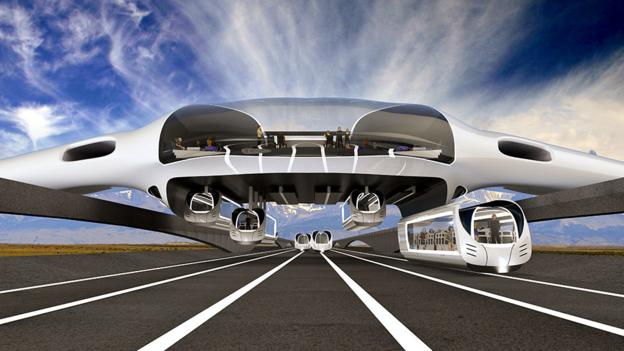
A group of students from the University of Glasgow and the Glasgow School of Art in the UK have devised Horizon, a system in which planes would lift and drop moving railway carriage-like “pods” from and onto the ground, thereby drastically cutting journey times. After studying the problems facing modern long-distance travellers, Andrew Flynn, Ewan Alston, Martin Keane and Mason Holden, sought to create a system that would significantly reduce the time it takes to get from points of departure to aeroplanes, and from them to destinations.
“One of the key things that we found was the lack of coherency between modes of transport – road, rail, and air,” says Holden. “There is no streamlined interface between the different modes.”
By the year 2050, the group imagines a long distance traveller will start their journey at a neighbourhood “SkyStation” where their luggage will be taken from them. The only security check required for the entire journey is carried out at this point. Passengers then board a “SkyLink” pod – essentially an autonomous train carriage propelled along the rail by magnetic levitation.
The 48 passengers these carry can, if they choose, remain in the same seat throughout the journey. Each pod has a battery large enough to provide power for not just itself, but also the plane. The battery is recharged through induction when the pod is on the ground, in a similar way proposed road based chargin of electric car. Pods will also have luggage space, and two articulated hooks to attach them to planes.
The aircraft, which remain in the air almost all the time, will be a blended wing design - a flattened shape in which the body and wings are distinct but more smoothly blended than traditional planes. The result looks something like a manta ray. This design has the advantage of being able to fly at slower speeds.
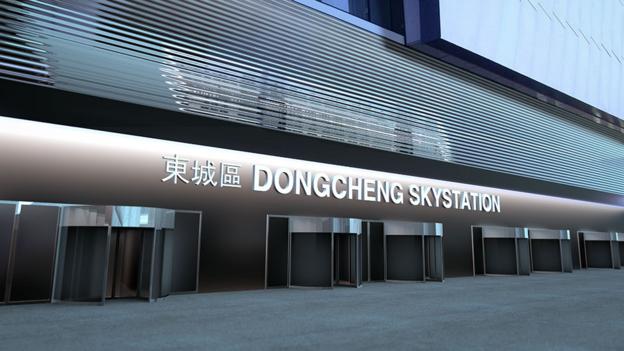
On approach to a destination city, passengers are told to return to their seats from the bar or observation deck before the plane, which has no wheels or landing gear, swoops down at 150mph (240 kph) and is attached temporarily to the SkyLink track using electromagnetic coupling. The arriving pod is deposited onto the rails. As it decelerates, a departure pod on a parallel track accelerates to match the speed of the still moving plane. Once it is safely attached, the plane takes off again, fully charged and new passengers.
Without a lifetime of experience working within a specific industry, members of the Horizon System group are free of traditional restraints or predetermined beliefs about the way things should be.
As part of their research they highlighted examples of people taking three hours to get from a city centre to an airport, and of walking between gates at airports taking up to 40 minutes.
“What we want to do it break up these large, standalone airports, into smaller more diverse hubs that could be placed around cities to be much more accessible for people living there,” says Flynn.
The Glasgow group is not the only one looking at plane-train hybrids. A team from the Ecole Polytechnique Federale De Lausanne, in Switzerland, is proposing Clip-Air, a modular aircraft with detachable pods. The assembled vehicle looks similar to today’s planes, but with three tubular bodies that can be removed or replaced individually to hold passengers, cargo or fuel.
“Sometimes today airplanes are flying above capacity, but sometimes they’re empty,” says Bilge Atasoy, a student involved in the design. “The most important thing is being flexible, being able to adjust to demand of either passengers or cargo.”
Of course gargantuan hurdles would have to be overcome before anything resembling the Horizon concept could become a reality. Planes cannot currently be powered by electric power alone, and developing the ability to do so would require advances in materials and other technologies. Obtaining the international agreements for a standardised system could take decades.
Yet with the global population set to reach nine billion by the middle of this century, and existing transport systems already at full stretch, something as radical as Horizon may be our only hope. Asked what we can expect if we do not think more imaginatively about how we move long distances, Clip-Air project leader Claudio Leonardi’s summary is succinct and to the point.
“Congestion,” he says.
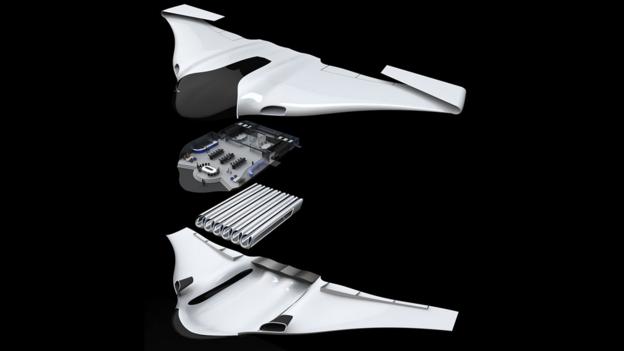
- InsiIn
- IIde look
- Aircraft would have a blended wing design –in which the body and wings are more smoothly blended than trii
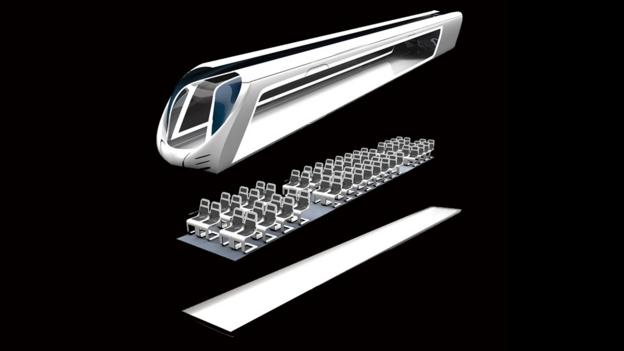
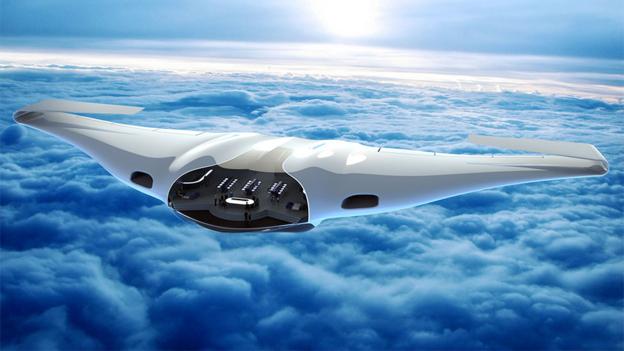 aditional plane designs.
aditional plane designs. -

-
If we could build planes that big, then we'll just build planes that big.
-
It's true~~~
They already built big planes in 1945... Striker 1945
